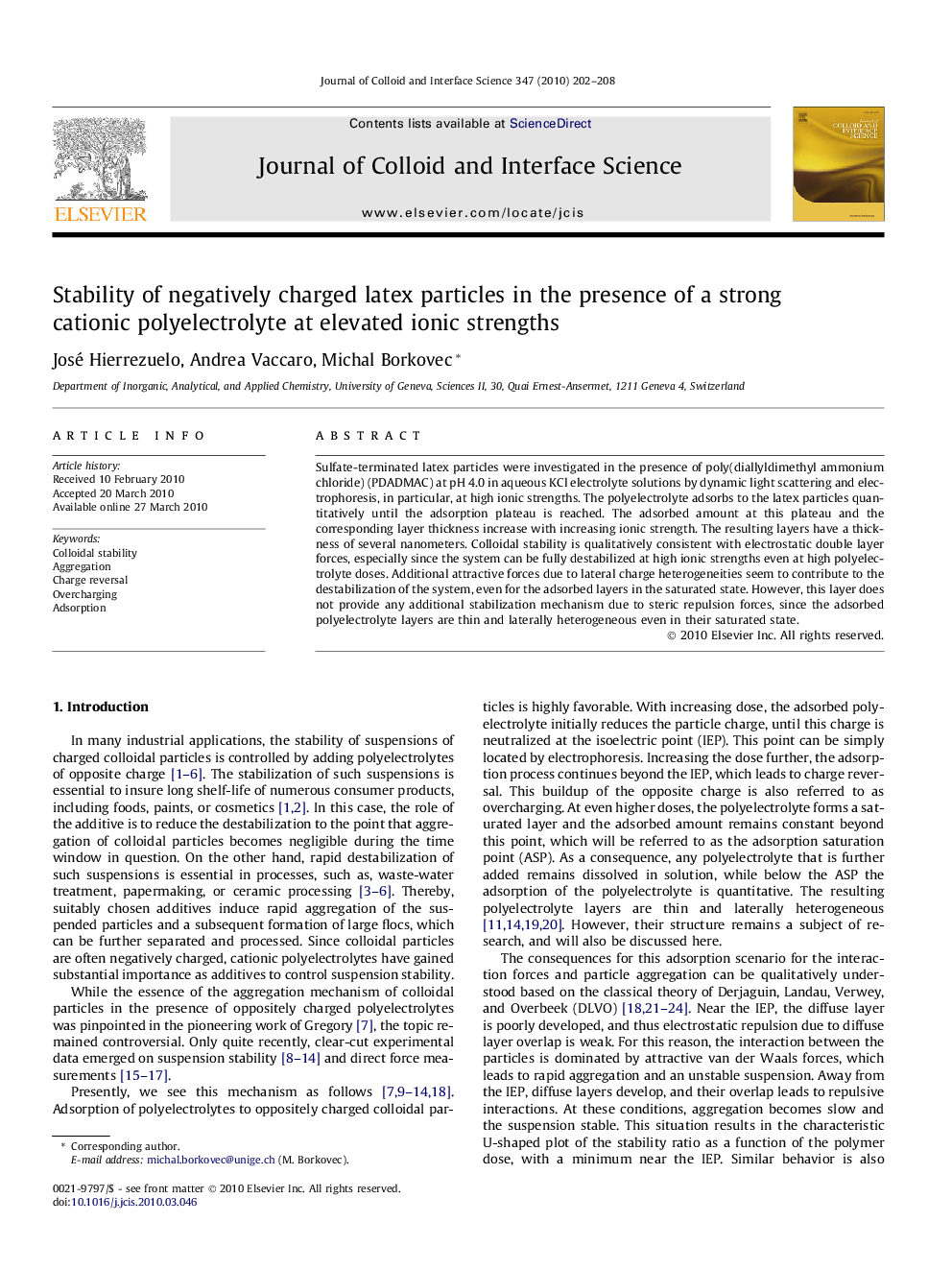| Article ID | Journal | Published Year | Pages | File Type |
|---|---|---|---|---|
| 609744 | Journal of Colloid and Interface Science | 2010 | 7 Pages |
Sulfate-terminated latex particles were investigated in the presence of poly(diallyldimethyl ammonium chloride) (PDADMAC) at pH 4.0 in aqueous KCl electrolyte solutions by dynamic light scattering and electrophoresis, in particular, at high ionic strengths. The polyelectrolyte adsorbs to the latex particles quantitatively until the adsorption plateau is reached. The adsorbed amount at this plateau and the corresponding layer thickness increase with increasing ionic strength. The resulting layers have a thickness of several nanometers. Colloidal stability is qualitatively consistent with electrostatic double layer forces, especially since the system can be fully destabilized at high ionic strengths even at high polyelectrolyte doses. Additional attractive forces due to lateral charge heterogeneities seem to contribute to the destabilization of the system, even for the adsorbed layers in the saturated state. However, this layer does not provide any additional stabilization mechanism due to steric repulsion forces, since the adsorbed polyelectrolyte layers are thin and laterally heterogeneous even in their saturated state.
Graphical abstractWhen negatively charged colloidal particle suspensions are destabilized with cationic polyelectrolyte the colloidal stability approaches a plateau at higher polyelectrolyte dose.Figure optionsDownload full-size imageDownload high-quality image (74 K)Download as PowerPoint slide
